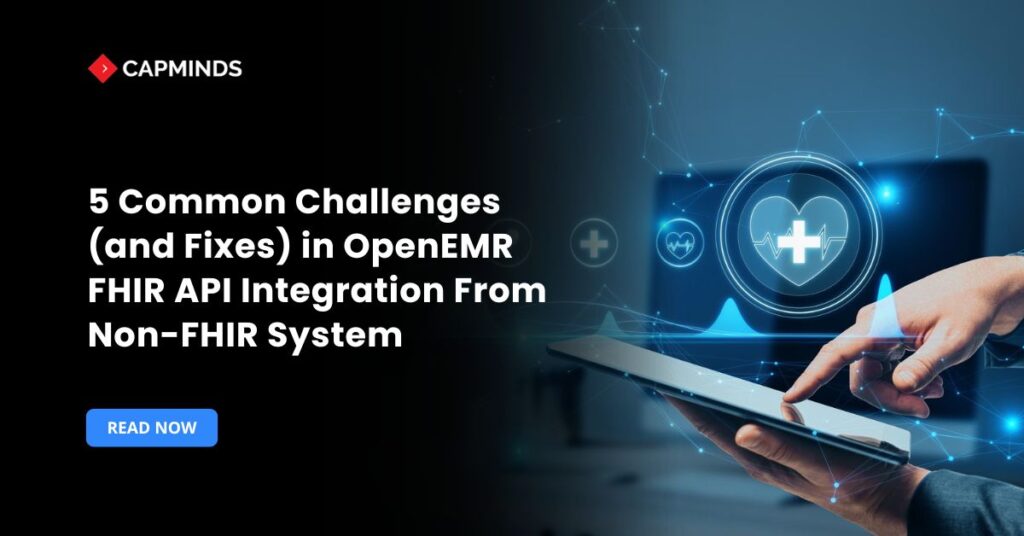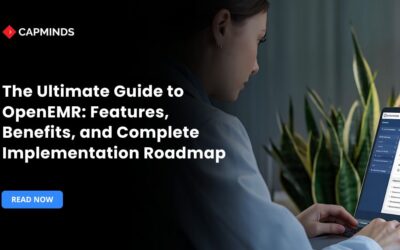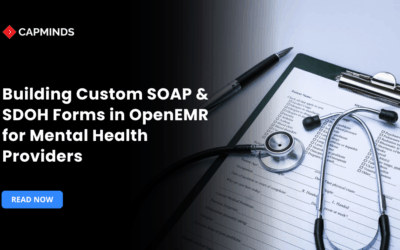5 Common Challenges (and Fixes) in OpenEMR FHIR API Integration From Non-FHIR System
Integrating a non-FHIR system with OpenEMR’s FHIR API can greatly improve interoperability, but it comes with several challenges. OpenEMR is a popular open-source EMR system, and since version 7, it includes a FHIR R4 REST API for standardized data exchange. Healthcare providers and IT decision-makers often face hurdles when connecting their existing (non-FHIR) systems to OpenEMR’s FHIR interface.
Below, we outline five common challenges in such integrations and how to fix them, based on real community experiences and best practices.
Common Challenges in OpenEMR FHIR API Integration
1. Challenge: Determining the Right Integration Approach
Knowing which API endpoints to utilize and how to begin the integration are common first challenges. Teams frequently question whether they can utilize OpenEMR’s RESTful API directly or if they require a middleman to convert the data from their system into FHIR.
- For instance, a community member inquired as to whether OpenEMR’s REST API would be adequate on its own or if a custom translation layer was required.
- Many are unsure how to retrieve patient data, like demographics, prescriptions, by a patient identifier from OpenEMR to an external application.
2. Challenge: Handling Authentication and Authorization (OAuth2 Scopes)
When using OpenEMR’s FHIR API, secure authentication is required. To secure its API, OpenEMR uses an OAuth2 authorization server (which supports SMART on FHIR).
Getting tokens with the appropriate scopes and correctly registering the external application are frequent challenges. In practice, users have encountered confusion about which OAuth2 scopes to use, for example, a developer managed to retrieve patient info with user/Patient.read and medication data with user/MedicationRequest.read, but struggled to find a scope for writing back prescription updates. The attempted user/MedicationRequest.write scope resulted in an “invalid scope” error because it wasn’t recognized by OpenEMR’s authorization module.
3. Challenge: Limited FHIR Write Capabilities in OpenEMR
One of the more significant challenges is that OpenEMR’s FHIR API currently has limited support for write operations. It was initially designed for reading and exporting data, and some FHIR resource types, e.g., MedicationRequest for prescriptions, do not yet have full “create/update” (POST/PUT) implemented in the core system. For instance, in a real-world scenario, a developer needed to update patient prescriptions from a third-party application using the FHIR MedicationRequest.write capability.
They discovered that this endpoint was not implemented out of the box, it didn’t appear in OpenEMR’s FHIR documentation (Swagger), and the system rejected the write scope as unknown. This is because OpenEMR’s FHIR module had not included that write functionality at the time.
4. Challenge: Data Mapping and Terminology Alignment
Integrating two systems means exchanging data that each system might represent differently. A non-FHIR system may utilize its own schemas, field names, or code systems that don’t directly match FHIR’s structures. One problem is mapping patient records, prescriptions, appointments, and other data from the legacy format into the FHIR resource format that OpenEMR expects and vice versa for data flowing out of OpenEMR.
This entails coordinating medical coding standards, units, date formats, patient IDs, and drug identification. While OpenEMR’s FHIR API could anticipate a standardized code, like a RxNorm code in a MedicationRequest resource, a pharmaceutical in your system might be designated by a local drug code or free-text name.
5. Challenge: Data Verification and System Integrity
Data integrity and clinical accuracy are issues that arise when data is injected into an EHR, such as OpenEMR, from an external source. Clinical staff typically review data before it is recorded directly into an EHR. But with automated API integration, there’s a risk of unverified or erroneous data entering the patient record without oversight.
- The OpenEMR community has recognized this issue, for instance, they discuss the need for a “holding area” for unverified data coming from outside, which could be reviewed and accepted or rejected by a clinician before becoming part of the official record.
- Currently, such a mechanism is not yet built into OpenEMR’s FHIR workflow.
- This challenge includes ensuring that incoming data doesn’t corrupt existing records, violate privacy/security rules, or bypass necessary clinical validation.
Related: Achieving Interoperability at Scale: HL7, FHIR, and API Integrations with OpenEMR
Solutions to Tackle the Challenges in OpenEMR FHIR API Integration
1. Leverage OpenEMR’s built-in FHIR capabilities and plan the integration workflow
As long as you style requests and data in accordance with FHIR standards, the external system can typically access OpenEMR’s FHIR REST endpoints directly without the need for an additional translation layer.
Key steps include:
- Turn on and configure OpenEMR’s FHIR API: Make sure OpenEMR has the FHIR module installed and turned on. To test and find the right endpoints, OpenEMR offers a Swagger user interface. This helps confirm which FHIR resources and operations are available for the data you need.
- Use Standard FHIR Resources: Determine which FHIR resources your non-FHIR system’s data corresponds to. Core resources for reading data, such as Patient, Encounter, Observation, MedicationRequest, etc., are supported by OpenEMR’s FHIR API. When you make API requests, make sure to convert the data from your system into these FHIR structures.
- Consider Native API for Gaps: If certain data isn’t exposed via FHIR, OpenEMR also has a native REST API for various objects. You may use this native API as a fallback or interim solution, but prioritize FHIR for future-proof standardization.
By carefully evaluating your needs and OpenEMR’s provided endpoints, you can choose an approach that minimizes custom translation logic.
Related: The Beginners Guide to Getting Started with FHIR on OpenEMR
2. Set up a robust OAuth2 workflow and use only the scopes OpenEMR currently supports.
- Register a Client in OpenEMR: Register your third-party application under OAuth2 Clients in OpenEMR’s administration. Provide redirect URIs and select the proper client type. OpenEMR will generate a Client ID and secret for confidential clients.
- Enable Required Scopes: Choose the FHIR scopes that your app needs while registering. Use scopes such as user/Patient for read access. either read or observe. As needed, read. For write access, use available scopes such as user/Medication.write if applicable. The specified write function is not currently supported if a desired scope is not recognized.
- Obtain an Access Token via OAuth2: To authenticate and obtain a token, use the SMART on FHIR authorization endpoints. OpenEMR is compatible with the OAuth2 standard flow. Verify that your integration stores the token correctly and employs HTTPS.
- Use the Token in API Calls: After obtaining a bearer token, add it to each FHIR API request’s Authorization header. This allows access based on scopes. To make sure the token is functioning, test it by using the Swagger UI or curl to call a basic endpoint.
3. Use alternative pathways for writes and extend OpenEMR in a safe, upgrade-friendly way.
Leverage Standard API Endpoints for Writing
OpenEMR’s native REST API (non-FHIR) offers some write capabilities that can serve as a workaround.
- To add a drug to a patient’s current medication list, for instance, OpenEMR has a standard API endpoint /api/patient/{PID}/medication with a scope of medication.write.
- This may satisfy the requirement to note that a patient is taking a new drug, even if it isn’t the same as entering a complete prescription order in the prescriptions table.
- Evaluate if the available standard endpoints can meet your requirements for creating data. If they do, you can call those APIs from your external system as an interim solution.
Implement Missing FHIR Write Functions via Module
If core FHIR support is lacking for your use case, consider writing a custom OpenEMR module to extend the API. In the community example, the developer wrote a custom FHIR MedicationRequest POST endpoint by modifying core files. The OpenEMR maintainers advised rebuilding this as a custom module instead of a core hack. By developing a module, you can introduce new FHIR endpoints or logic that plug into OpenEMR without altering the base code.
This approach is upgrade-safe, your customizations won’t be overwritten when OpenEMR is updated, and you maintain a clean separation. OpenEMR’s module framework allows adding REST APIs and logic, which CapMinds or other OpenEMR experts often utilize to deliver new features without forking the code.
4. Implement a robust data mapping strategy and utilize standards to ensure consistency
Use Consistent Identifiers and Codes
Decide on a master source for key identifiers. For medications and diagnoses, use standard code systems so that both systems refer to the same concepts. If the non-FHIR system lacks these, consider augmenting its data with standard codes during the integration process.
Create Mapping Documentation
It’s helpful to create a mapping document or use an interface engine to transform data. Each field from the external system should correspond to a FHIR resource element. Having this mapping clearly defined prevents data from getting lost or misfiled.
Utilize Middleware or Transformation Tools if Needed
Use custom scripts or an integration engine like Mirth Connect to translate formats if there is a significant format mismatch. Middleware can contact OpenEMR’s FHIR API after listening for events from the non-FHIR system and converting the message into an FHIR resource.
This extra layer can handle complex transformations and even combine or split data as required. OpenEMR’s built-in support for HL7 v2 sometimes requires such middleware for smooth operation, and the same concept applies to FHIR.
Test for Data Consistency
After mapping, rigorously test with sample records. Ensure that the data collected from OpenEMR via FHIR, when shown in the external system, fits expectations. Similarly, OpenEMR’s user interface should accurately display any data sent from the external system.
Check edge cases to refine the mapping rules. Using OpenEMR’s Swagger UI or an API explorer tool can help inspect the exact JSON OpenEMR produces or accepts for a resource, which you can compare against your system’s data.
Addressing data mapping early prevents integration hiccups down the line. It ensures that both systems “speak the same language” semantically.
5. Establish safeguards and workflows to verify external data and protect the core system
Role-Based Permissions and Scope Restrictions
Limit what the external system can do. Make sure that the OpenEMR user account used for the API and the OAuth2 scopes have only the required permissions. Don’t give the integration more authority, such as the ability to delete records or access other modules, if its sole purpose is to retrieve patient information and send prescription updates. This limits potential damage from mistakes or misuse.
Implement a Review Process (If Possible)
Until OpenEMR offers a built-in “unverified data” queue, consider a procedural workaround. For instance, have the external system tag certain entries with a flag that indicates it was added externally. Clinicians or staff can regularly review such entries.
- In the instance of prescriptions, the workflow might be: external system adds a medication order via API → it appears in OpenEMR with a comment “Imported from external system” → a pharmacist or physician in OpenEMR verifies and edits the record.
- This stage preserves clinical oversight even though it could be manual.
Use Logging and Alerts
Turn on detailed audit logging in OpenEMR (Administration → Globals → Logging) to record API interactions. This guarantees that the timestamp, source, and modified data are recorded for each creation or update made through the API.
Additionally, you can use middleware or the external system to provide alerts. For instance, you could notify an administrator via email or another channel each time a new record is added through the integration.
In this manner, nothing goes overlooked. Monitoring tools or SIEM systems can also catch anomalies if an external interface suddenly behaves unexpectedly.
Data Validation on Entry
Whenever possible, validate data on the external side before sending it. Simple checks like format validation, value ranges, and required fields help ensure that OpenEMR receives well-formed data. OpenEMR’s API will also enforce some validation, if the data is malformed or inconsistent, the API call might fail. Pay attention to any error responses and handle them gracefully. It’s better to catch an issue in transit than to introduce bad data into the patient chart.
OpenEMR FHIR Integration Services to Power Seamless Interoperability
CapMinds offers end-to-end digital health technology services tailored to meet the integration demands of modern healthcare systems.
Whether you’re looking to connect non-FHIR platforms to OpenEMR or streamline your HL7 and FHIR workflows, our service-oriented approach ensures secure, scalable, and compliant health data exchange.
Our OpenEMR FHIR Integration Services include:
- OpenEMR Customization & API Enablement: Deploy FHIR R4 and native APIs to connect third-party applications without modifying core code.
- FHIR API Development & SMART-on-FHIR Enablement: Build bi-directional, TEFCA-ready integrations with secure OAuth2 and scope handling.
- HL7 & Interface Engine Configuration: Leverage Mirth Connect, Rhapsody, or InterSystems to transform, route, and validate messages across systems.
- Terminology & Data Mapping Services: Align legacy system data with FHIR resources using SNOMED CT, RxNorm, and LOINC standards.
- Data Governance & Compliance: Implement verification workflows, audit trails, and safeguards for data integrity and HIPAA/USCDI readiness.
Let CapMinds guide your transition to fully interoperable healthcare IT. Book a free integration audit with our experts today.




